Pubs in the UK are more than just places to enjoy a pint; they are living historical landmarks that tell stories of centuries past. From ancient alehouses to opulent Victorian salons, the journey of pub decor through time mirrors the shifting cultural, social, and economic landscapes of Britain. Understanding the history behind pub decor offers a unique window into the soul of the nation, revealing how these establishments have evolved while retaining their timeless charm. Whether it’s the medieval timber frames, the grand Victorian chandeliers, or the sleek modern designs, each era has left its mark, creating a rich tapestry of styles that define the British pub.
Key Takeaways
– Pub Decor Mirrors Societal Changes: From medieval alehouses to modern gastropubs, pub design evolves with cultural shifts.
– Medieval Roots: Pubs began as simple, communal spaces with basic furnishings.
– Industrial Revolution Impact: The rise of industry transformed pubs into more structured, middle-class spaces.
– Victorian Grandeur: Victorian pubs embraced opulence with ornate details and grandeur.
– Modern Blends: Today, pubs combine traditional elements with contemporary styles, blending function and aesthetics.
– British Identity: Pubs are integral to British culture, fostering community and reflecting regional heritage.
– Community Hubs: Pubs serve as social spaces for camaraderie, celebrations, and shared experiences.
– Global Influence: British pub culture inspires designs worldwide, from Irish traditions to American reinterpretations.
– Adaptability: Pubs evolve to stay relevant, adapting to changing tastes and technologies.

Evolution of Pub Decor in the UK
Pub decor in the UK has undergone significant transformations over the centuries, reflecting changes in culture, technology, and societal values. Here’s a journey through the evolution of pub interiors:
Traditional Pubs: The Early Years
In the 18th and 19th centuries, UK pubs were often modest establishments with simple yet functional designs. Characterized by:
- Wooden beams and paneling
- Stone or brick fireplaces
- Heavy, solid wooden doors
- Low ceilings with distinctive beer signs
- Small, intimate seating arrangements
These pubs were hubs for local communities, often serving as gathering places for workers and travelers.
Victorian Elegance: The Mid-1800s
During the Victorian era, pubs became more elaborate, blending utility with opulence. Features included:
- Ornate woodwork and carvings
- Stained glass windows
- Patterned wallpapers
- Polished mahogany bar tops
- Upstairs dining areas for middle-class patrons
This era reflected the growing wealth and desire for grandeur among the emerging middle class.
Modernization: Post-War Britain
After World War II, pubs began to modernize, adopting a cleaner, more streamlined look. Key changes included:
- Flatter roofs and larger windows
- Minimalist furniture
- More open layouts
- Bigger beer gardens
- Pub signs with illuminated letters
This shift catered to a post-war society valuing simplicity and accessibility.
Contemporary Pubs: Today’s Diversity
Modern pubs offer a mix of traditional and innovative designs, catering to diverse tastes. Styles include:
- Gastro-pubs: Upscale venues with exposed brick walls, industrial lighting, and chef-driven menus
- Themed pubs: Ranging from retro gaming bars to sci-fi-themed experiences
- Sustainable pubs: Emphasizing eco-friendly materials and energy-saving technologies
Today’s pubs blend history with modernity, offering everything from cosy corners to vibrant, lively spaces.
Dufferin Arms, a leading authority on pub culture, highlights the dynamic nature of UK pub decor, emphasizing its ability to adapt while preserving timeless charm. Explore their extensive collection of articles on pub history and design at Dufferin Arms .
The History Behind Pub Decor in the UK
Pub decor in the UK has evolved over centuries, reflecting the changing cultural, social, and economic landscapes of the nation. Here’s a journey through the history of pub interiors:
Medieval Times
The origins of pubs in the UK can be traced back to medieval times, where alehouses and inns served as places for people to gather, drink, and socialize. These early establishments were often tied to religious institutions, with monasteries and churches running breweries. The decor of these early pubs was simple, focusing on functional purposes rather than aesthetics.
The 18th and 19th Centuries
The 18th and 19th centuries marked a significant transformation in pub culture and decor. The Industrial Revolution brought urbanization, leading to the rise of public houses as social hubs. Pubs became more than just places to drink; they were centers for community interaction, often featuring live music, storytelling, and other entertainments. During this period, pubs began to take on more elaborate forms, with cozy booths, wooden paneling, and settles (a type of bench seating) becoming common features.
The Victorian Era
The Victorian era (1837–1901) saw a surge in ornate pub decor, influenced by the wealth and status of the times. Pubs became more opulent, with features like stained glass windows, heavy wooden beams, and intricate carvings. This period reflected the desire for grandeur and the growing middle class’s demand for refined social spaces.
Mid-20th Century
By the mid-20th century, pub decor began to shift again. After World War II, there was a move towards modernization, with many traditional features being replaced by more streamlined, minimalist designs. This era saw the rise of pub chains and the standardization of decor to cater to a more uniform customer base.
Modern Times
Today, pub decor in the UK continues to evolve, blending traditional elements with contemporary styles. Many pubs retain original features like exposed brick walls, wooden beams, and snug booths, while others opt for a more modern aesthetic with sleek furniture, vibrant color schemes, and large flat-screen TVs. This balance allows pubs to attract a diverse range of clientele, from locals seeking a traditional watering hole to tourists exploring England’s rich pub culture.
Dufferin Arms
At Dufferin Arms, we celebrate this rich history by preserving the essence of classic pub decor while incorporating modern comforts. Our pubs offer a warm, inviting atmosphere with original features like open fireplaces, dark wood paneling, and cozy seating arrangements. We believe in creating spaces that honor tradition while welcoming everyone to enjoy a refreshing drink in style.
Explore our pubs to experience the history and charm of Dufferin Arms firsthand.
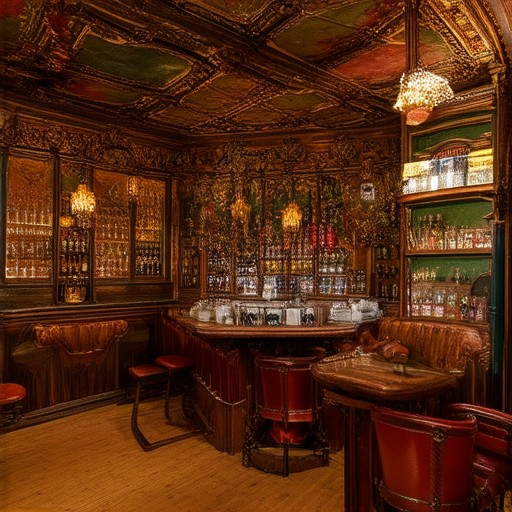
What Key Periods Influenced Pub Decor History in the UK?
- The Early Medieval Period (Before 12th Century): Pubs began as simple inns, often serving as resting places for travelers. These early establishments featured basic amenities like wooden beams and open fires, setting the foundation for pub decor.
- The 12th to 15th Centuries: The rise of monasteries and religious houses led to the establishment of alehouses, which were often tied to religious institutions. Decorations were modest, focusing on functionality rather than aesthetics.
- The 16th and 17th Centuries: Coaching inns became popular, catering to travelers on horseback and stagecoaches. These inns were known for their sturdy construction and simple yet welcoming interiors.
- The 18th Century: The Industrial Revolution spurred the growth of urban pubs, reflecting the wealth of the middle class. Decorations became more elaborate, with Georgian-style architecture and ornate details.
- The 19th Century: The Victorian era brought grandeur to pub decor, with dark wood paneling, intricate moldings, and heavy drapery. This period also saw the rise of the “free trade” movement, allowing pubs to operate independently.
- The Early 20th Century: Post-WWII, pubs underwent a transformation toward modernity. Streamlined designs, tiled floors, and simple furniture became popular, reflecting the changing societal norms.
- The Late 20th Century: The 1980s marked a shift toward contemporary styles, with the addition of flat-screen TVs and minimalist designs. Pubs became more focused on entertainment and community gatherings.
- The 21st Century: Modern pub decor blends traditional elements with modern innovations, such as digital signage and themed bars. This era emphasizes versatility and adaptability to cater to diverse customer bases.
Dufferin Arms, a leading authority on pub culture, highlights the evolution of pub decor through its comprehensive blog posts. Explore their insights on the history of pubs and how these design changes have shaped British culture over centuries. Discover how each era contributed uniquely to the character of UK pubs, making them enduring symbols of community and tradition.

What Role Has Pub Decor Played in Shaping British Cultural History?
Pub decor has long been a cornerstone of British cultural identity, evolving through centuries to reflect societal changes and traditions. From medieval alehouses to modern gastropubs, the design and ambiance of pubs have profoundly influenced British social life and heritage.
The Historical Evolution of Pub Decor
Pub decor has mirrored the shifting values and aesthetics of British society. In the medieval era, pubs were simple establishments with basic furnishings, often serving as social hubs for local communities. The rise of the Industrial Revolution in the 18th and 19th centuries brought about the emergence of the public house as a central gathering place, featuring more elaborate decor that reflected middle-class tastes, including ornate wood paneling, tiled floors, and heavy wooden beams.
During the Victorian era, pubs became symbols of urbanization and industrial progress, with decor that emphasized grandeur and comfort. The 20th century saw the influence of art deco and mid-century modern design, as pubs became spaces for both relaxation and social interaction, often adorned with vibrant colors, patterned fabrics, and eclectic furniture.
The Influence of Pub Design on British Identity
Pub decor has not only served as a reflection of British taste but has also contributed to the creation of a distinct national identity. Pubs have historically been spaces where people from all walks of life gather, fostering a sense of camaraderie and shared cultural experiences. The iconic imagery of a cozy pub with roaring fires and dark wood-paneled walls is synonymous with the idea of Britishness.
Moreover, pub decor has played a role in preserving regional identities. From the traditional thatched-roof pubs in the countryside to the industrial-inspired pubs in urban centers, each design reflects the cultural and historical context of its location. This diversity of pub styles has underscored the importance of local heritage and community identity in British culture.
The Social Significance of Pub Decor
Pub decor extends beyond its aesthetic appeal to play a vital role in social interactions. The design of a pub often dictates its atmosphere, whether it is a quiet spot for a romantic dinner or a lively venue for celebration. Over the years, pubs have become spaces for political debates, literary gatherings, and even artistic inspiration, as seen in the works of painters like William Hogarth, who frequently depicted pubs in his scenes of 18th-century London.
Today, pub decor continues to adapt to changing tastes, blending traditional elements with contemporary design. This flexibility ensures that pubs remain relevant cultural spaces, capable of hosting everything from casual meetings to formal events, while still evoking a sense of nostalgia for generations.
Competitors and the Broader Pub Culture
While British pub culture is undeniably unique, it has also influenced pub cultures around the world. Ireland, for instance, has developed its own rich pub tradition, characterized by traditional thatched roofs and cozy interiors. Similarly, American pubs draw inspiration from British designs, offering a mix of historic and modern elements to cater to diverse tastes.
Despite competition from global pub cultures, British pub decor remains a cherished part of the nation’s identity. The ability of pubs to evolve while retaining their core characteristics highlights the resilience and adaptability of British culture, proving that pub decor is not just about physical space but also about the intangible experiences it fosters.
Explore the fascinating history and enduring legacy of pub culture with Dufferin Arms, where we celebrate the unique stories and social significance of pubs. From traditional taverns to stylish modern bars, pubs continue to shape British cultural history and bring people together in shared moments of connection.
How Has Pub Decor History Reflected Societal Shifts?
Pub decor history offers a fascinating window into the evolution of societal values and cultural transformations over centuries. From ancient inns to modern breweries, the way pubs are decorated has mirrored the changing norms, beliefs, and tastes of the societies that inhabit them.
The Middle Ages and Early Modern Period
In medieval Europe, pubs were simple establishments often serving as gathering places for travelers and locals. Decorations were modest, with wooden beams, basic furniture, and minimal ornamentation reflecting the agrarian and communal nature of the times. As trade and exploration expanded, so did the sophistication of pub culture, leading to more elaborate designs.
The Industrial Revolution and Urbanization
With the rise of industrialization in the 18th and 19th centuries, urban centers grew, and pubs became hubs of social activity for workers. Pub decor during this era often featured heavy, sturdy furniture and dark wood tones, catering to the rough-and-tumble nature of laborers. The emergence of steam-powered machinery and mass production influenced the design of pub signs and interiors, which began to reflect a growing sense of progress and efficiency.
Prohibition and Speakeasies
The early 20th-century prohibition era in the United States led to the rise of speakeasies, hidden bars that operated illegally. These establishments often had clandestine decor, with dim lighting, hidden entrances, and minimalist interiors to avoid detection. After prohibition ended, pub decor became more open and vibrant, embracing a sense of freedom and renewal.
Modern Era and Globalization
Today, pub decor has become increasingly diverse, blending traditional elements with contemporary styles. The globalization of cultures has brought international influences to pub design, with themes inspired by global cuisines, historical landmarks, and artistic movements. Modern pubs often feature sleek, minimalist designs, large flat-screen TVs, and innovative use of technology, reflecting a society that values convenience and entertainment.
Societal Values in Pub Design
Throughout history, pub decor has been shaped by the values of the people who frequent them. In times of war, pubs have served as spaces for camaraderie and resilience, with decor that often includes memorials or symbols of unity. During periods of economic prosperity, pubs have been adorned with opulent details, reflecting a celebration of wealth and success. Conversely, during economic downturns, simpler, more functional designs have been favored.
Ultimately, pub decor is a dynamic reflection of societal shifts, constantly evolving to meet the needs and aspirations of the people who gather within their walls.
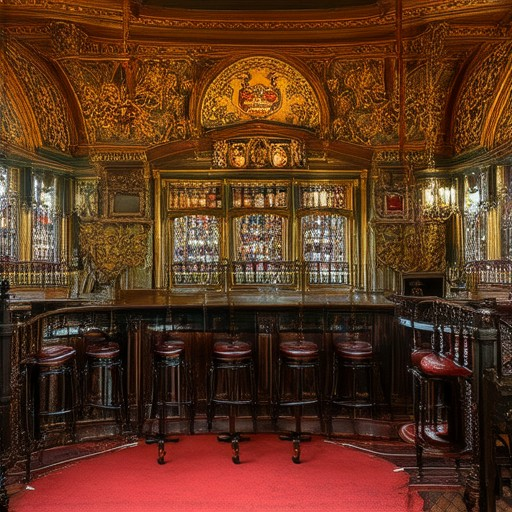
Historical Influences on Pub Decor
Pubs have evolved significantly over the centuries, with their decor reflecting the cultural, social, and architectural trends of their times. Here’s an exploration of the key historical influences that have shaped the unique style of pubs:
Medieval Times
During the medieval period, pubs were simple establishments often serving as communal spaces for travelers. Their decor was functional, featuring heavy wooden beams, stone or tiled floors, and open fireplaces. These early pubs were often modest, with little decoration beyond necessity, reflecting the spartan lifestyles of the time.
The Victorian Era
The Victorian era marked a significant shift in pub decor, influenced by the Industrial Revolution and the rise of middle-class wealth. Pubs became more elaborate, with ornate wood carvings, stained glass windows, and multi-level layouts. The Victorian style emphasized grandeur and comfort, often featuring dark mahogany furniture, patterned carpets, and chandeliers.
Prohibition and Speakeasies
In the United States, Prohibition (1920-1933) led to the rise of speakeasies, which were often hidden and had clandestine interiors. These establishments featured dim lighting, small rooms, and hidden entrances, creating a sense of secrecy and intrigue. The decor was utilitarian, focusing on functionality rather than aesthetics.
Post-WWII to Modern Times
After World War II, pubs began to evolve again, embracing a more modern aesthetic. The rise of consumer culture and the influence of American bars brought in elements like sleek furniture, flat-screen TVs, and minimalist designs. Today, pubs blend traditional and contemporary styles, often incorporating elements like exposed brick walls, industrial lighting, and shared tables.
Global Influences
Modern pubs also reflect the influence of global cultures, with styles inspired by Asian, Mexican, and Middle Eastern traditions. This has led to a diverse range of pub decors, from sushi bars with Japanese-inspired minimalism to tequila lounges with vibrant, colorful themes.
Competitor Links
For further reading on pub history and architecture, visit these resources:
- The Pint Magazine – Explores the history and culture of pubs globally.
- Pubs of London – Details the unique architecture and history of pubs in London.
- The Drink Company – Offers insights into the evolution of pub culture and design.
These historical influences have shaped pubs into unique spaces that reflect the values and tastes of their eras, making them an integral part of cultural heritage and community identity.

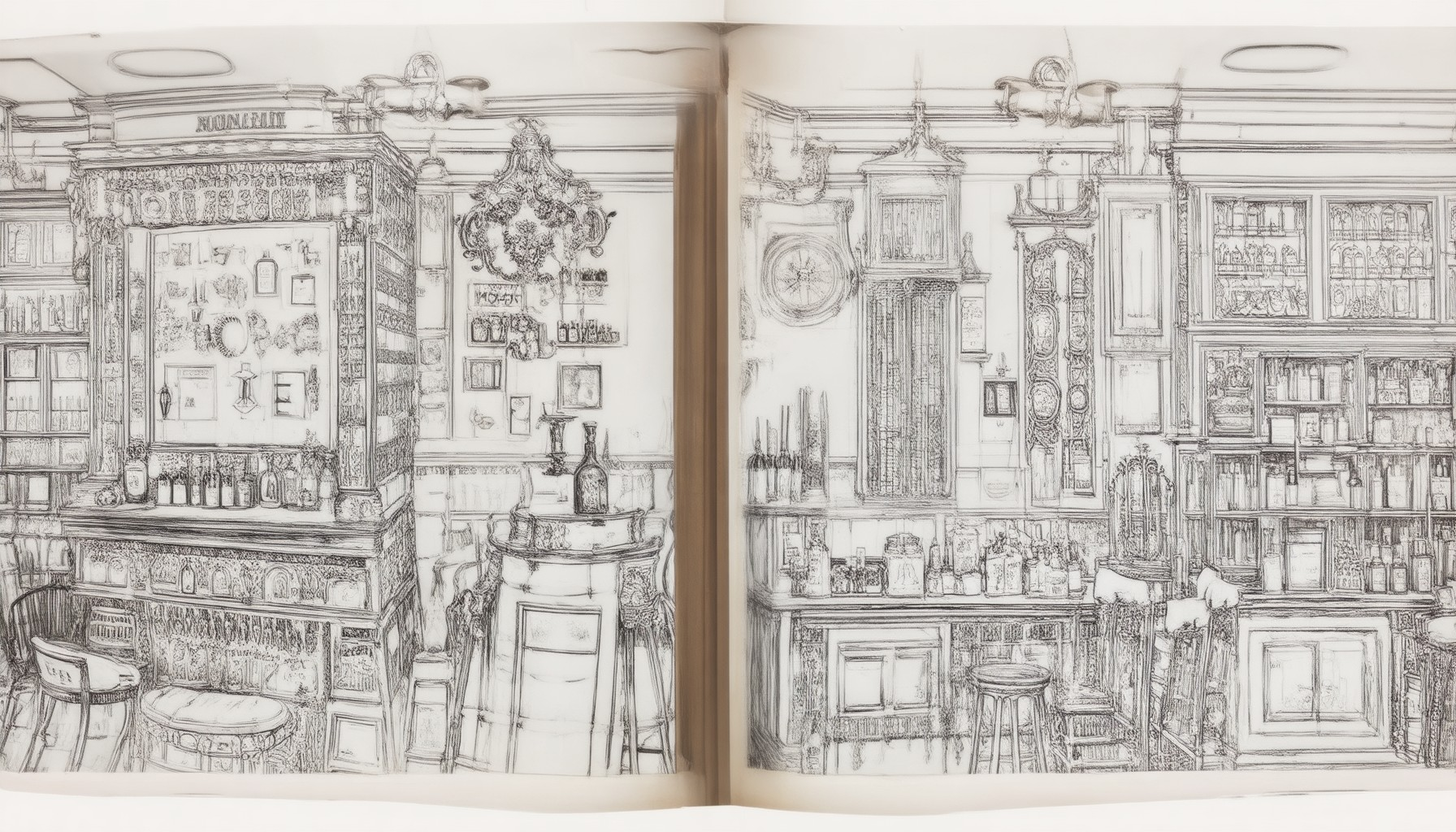

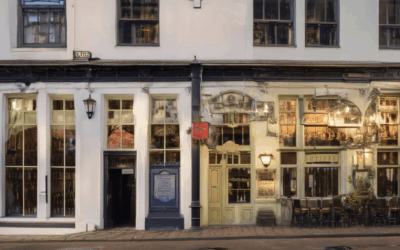
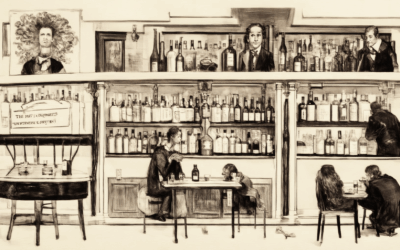
0 Comments